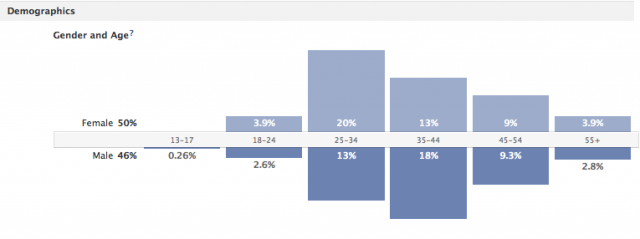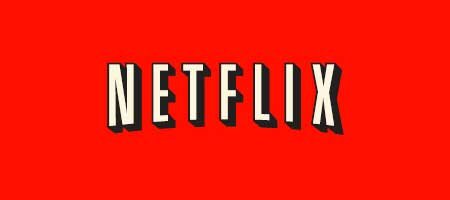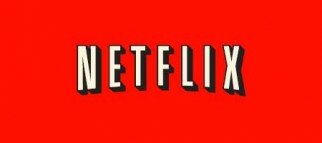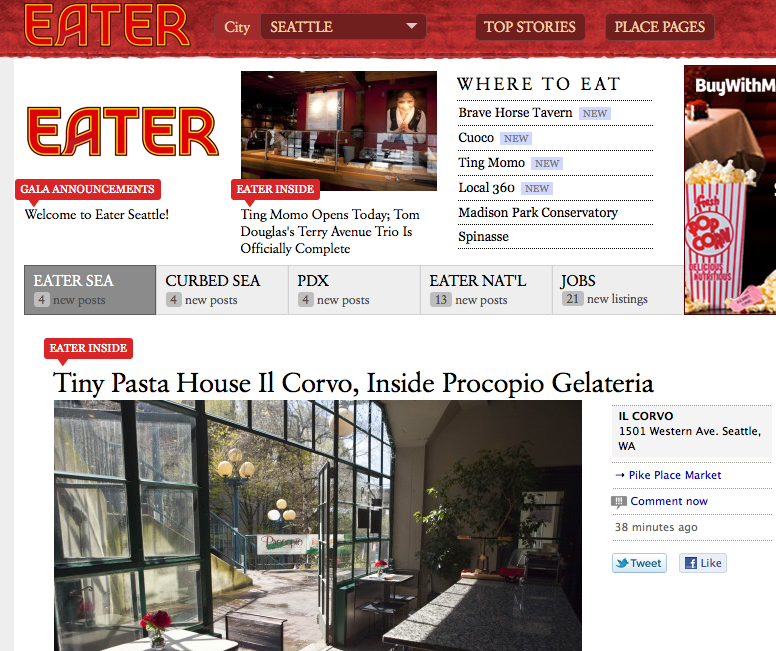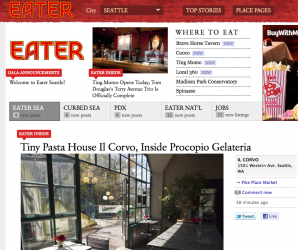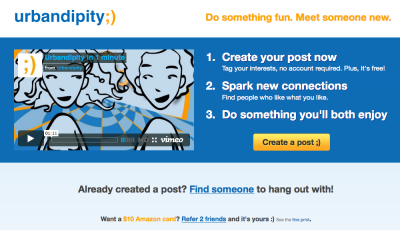 MvB, at his most publisher-esque
MvB, at his most publisher-esque
I have to admit to having been inspired by The New New News to sit down and write this update on the site’s progress. The play’s argument that transparency is lacking as news is reinvented (at least as a business model) online hit home with me. We’re in one of those historical periods of exploration, financing tiny little caravels to travel uncharted paths, and it’s just plain discourteous not to leave a journal behind.
Let me start with the more reader-relevant details before moving on to a discussion what makes The SunBreak tick, and what our online magazine plans are.
First, we are very close to relaunching on the WordPress platform, following the “deprecation” of the Neighborlogs platform we initially launched with. Instivate is refocusing on their Seattle Indie Ads network, with which we will remain associated. Their service automates the ad process, so that the advertiser can control daily spends, upload new artwork as needed, or pause an ad’s delivery. More on that choice later.
 A sneak preview of the design-in-progress. We hope to use Flickr pool photos in the masthead, with permission, of course. That’s Great Beyond’s shot.
A sneak preview of the design-in-progress. We hope to use Flickr pool photos in the masthead, with permission, of course. That’s Great Beyond’s shot.
The move to WordPress gives us the chance to try out an architecture that’s a little different from the current blog-style layout we’re using.
We’re working on a homepage layout that allows us to highlight our larger feature stories, while surfacing both the latest headlines, and the most popular, in a more skimmable format.
We’ll also be able to generate more extensive category pages (we don’t even have an archive currently), as well as create special features that unite a series, as when Jay goes on one of his foodie travel tours. (That will also give us the chance to offer sponsorships of those series to a Hertz or Horizon Air, to pick from just the H’s. This isn’t new thinking, I just really dislike irrelevant ads. More on that later, too.)
We’ll also be doing more to increase viewership of our Flickr pool–there are over 4,500 photos in there, and we want to do more to highlight all the photography that people share with us, not just the most recent shots. Also, there’s something called YouTube we’re looking into, mostly because I’m told local bands put “music videos” up there. (I hit upon a good elevator speech accidentally, talking to our intern Leah, when I said that in the future I hoped someone could look at an archive of The SunBreak and figure out why people enjoyed living in Seattle.)
Current reader logins and comment history are being maintained through an import process to both WordPress and Disqus, our new (disgustingly bloated and slow, according to our IT gnome) comment service. That choice is a trade-off, as Disqus is in part slow and erratic because of its popularity. Yet, because your Disqus profile “travels,” it removes a new username/password login hurdle.
Unless we somehow screw it up, the RSS feed should transfer seamlessly, and our Twitter followers and Facebook fans will one day soon click through to discover the makeover. Don’t ask me the specific day; we’re bootstrapping this whole operation. The SunBreak is powered by spare work cycles, and many thanks are owed to many people. And by thanks, I mean Bushmills.
Some of our readers will know that, editorial-staff-wise, we are a mutant spore of Seattlest.com, which is itself a member of the Gothamist network. (The SunBreak is not associated with Gothamist, except that we sometimes crash Seattlest happy hours.) If their mantra is to post more digestibly, more often, ours is to offer more context, at a relaxing, let’s-walk-around-Green-Lake pace. It was fun being editor over there, but man it was hectic.
Also, while The SunBreak is owned by an LLC (in case we libel Tim Eyman indefensibly, which is a risk for any publication), my preference these days is toward the co-op end of the spectrum, so that reader-members and contributors would all receive (very potentially) dividends.
I think this is a better way of reinventing subscribership online, rather than with pay walls. Obviously it’s a major business model shift, but I think it may make sense for low-profit publications that rely on a loyal community. (I say this somewhat idealistically–the practical reality of going co-op may well make me want to sell outdoor gear or organic groceries instead. Reader feedback welcome.)
The point is that the current model we’re using–our editors and contributors are essentially volunteers–leaves us in a strange limbo as the site’s readership and theoretical value grows. We are not planning to sell for $315 million any time soon, but I do feel an ethical responsibility to everyone who’s participating so that this line is never written about us: “there is no indication that its small army of unpaid bloggers will benefit from the deal.” Capitol Hill Seattle’s Justin Carder will confirm that I am a huge hippie communist in this regard.
So long as we rely strictly upon advertising, of course, the valuation question is, if not moot, on the wrong side of the decimal point. In the post “The Publisher’s Dilemma,” media consultant Frédéric Filloux charts the gut-check for the Washington Post: “Over the last seven years, for each dollar added to online revenue, the WaPo lost five dollars on print.” The lesson, apparently, is that we should buy our own Kaplan Education.
We don’t have legacy print operations to support, but I still find Filloux’ recommendations, paraphrased here, relevant:
- Cut down on ad inventory by at least 50 percent to revive a sense of market scarcity
- Invest much more in technology to match more sophisticated online players
- Refuse to sell ad inventory to ad networks that “act as powerful deflationary engines”
- Fight reach of inaccurate audience-measurement systems by setting up your own traffic analysis
Now, we are very small fish, and it’s easy to over-think things like ad rates, which you don’t have much leverage on. But I think if you’re a niche player on the internet, you need to leverage every inch of that niche. Do you want to sell ad space for pennies to a really awesome search company, or do you want to work the other angle, and make what are boutique ad sales (trading on prominence and exclusivity)? It’s hard to do both and not upset someone.
I am lazy (energy-optimizing) when it comes to this, so I am “strategically” developing a site with few ad placements, but in clear line-of-sight, not stuffed into a sidebar that no one has a reason to look at. I suspect that I’ll still have to work to educate advertisers on the difference between “owning” a page and being one of 50 ads on a page, which makes me grumpy.
But I really want these ads to pull because the readers see and use them, and that means being sure the advertiser is a good fit and that their ad stands out. Instivate’s Indie Ads allows us to serve advertisers who are local, who choose The SunBreak.
Traffic tracking and technology investments are trickier. Again, we are small fish, and I am not inventing a new analytics system in my spare time. But what I can do is use as many means of tracking as possible, to build a fuller picture of the audience: WordPress comes with a stats package, but I can also get feedback from Google Analytics, Quantcast, Feedburner, and Facebook (Insights).
At the very least, the discrepancies between these sources help define “unknown knowns.” And when they come close (Google reports 15,000 people visiting last month, Quantcast reports 11,000), you build a range. Sometimes you discover a power law: Our few hundred RSS readers view posts voraciously, almost doubling the amount of views we get on the site alone. Our Facebook fans also read like a house on fire, assuming houses on fire can get library cards. They now bring more page views than Google search.
In some ways this level of detail is bemusing, as I was initially inspired to start The SunBreak by the confluence of mostly non-business impulses. Too much Emerson on Goethe, maybe. Watching thoughtful cultural coverage decline in the face of a thriving Seattle cultural scene fired some contrarian streak in me: Why couldn’t a journal of Seattle arts and culture support itself, especially if it were built from the e-ground up? Monetization turns out to be a knottier, more time-consuming puzzle than I might have hoped–though this particular economic climate is a good test of sustainable practices.
But The SunBreak is for me already a success. It has also brought me into contact with really wonderful people, our SunBreak team, our readers, our interviewees–and it’s become a daily reminder of why we all love living here in Seattle: This is a very smart city, but it’s also got a lot of heart. Writing just some of that down turns out to be enormously fulfilling.
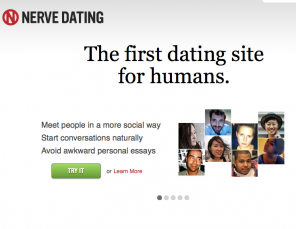 Remember the Aughts, when singletons (we called single people “singletons” and they spent time “quirkyalone”) used to flock to the various sites that featured Nerve personals? If you liked reading The Onion, for instance, you could visit their personals section and look for someone local to you, who would have written a little seeking-other ad usually modeled upon the snarky, urbane, interestingly-damaged-goods style of The Onion itself.
Remember the Aughts, when singletons (we called single people “singletons” and they spent time “quirkyalone”) used to flock to the various sites that featured Nerve personals? If you liked reading The Onion, for instance, you could visit their personals section and look for someone local to you, who would have written a little seeking-other ad usually modeled upon the snarky, urbane, interestingly-damaged-goods style of The Onion itself.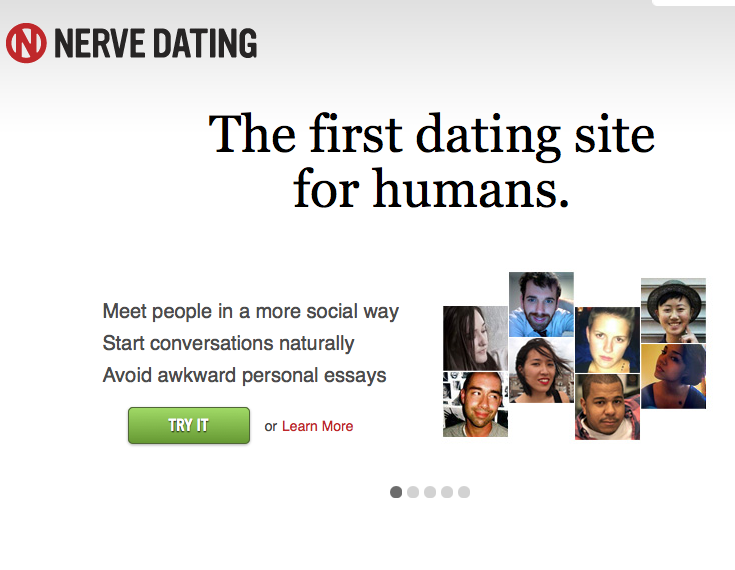

 After long refusing to release hard figures on Kindle sales, Amazon confirmed that they have sold at least four with their announcement today that “Kindle unit sales on Black Friday — including the new Kindle Fire tablet — were four times greater than whatever they were on Black Friday a year ago,” as GeekWire puts it.
After long refusing to release hard figures on Kindle sales, Amazon confirmed that they have sold at least four with their announcement today that “Kindle unit sales on Black Friday — including the new Kindle Fire tablet — were four times greater than whatever they were on Black Friday a year ago,” as GeekWire puts it.

